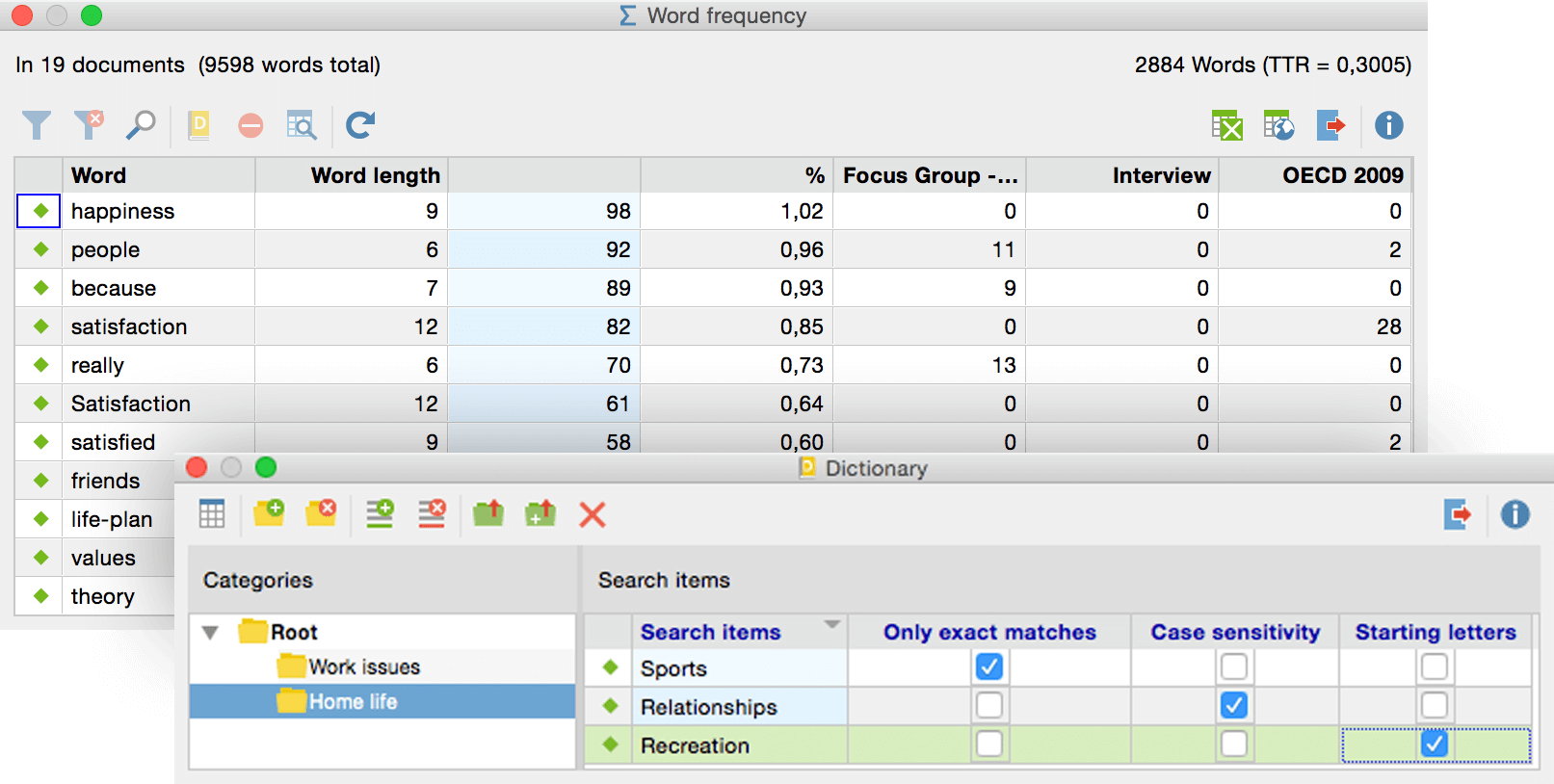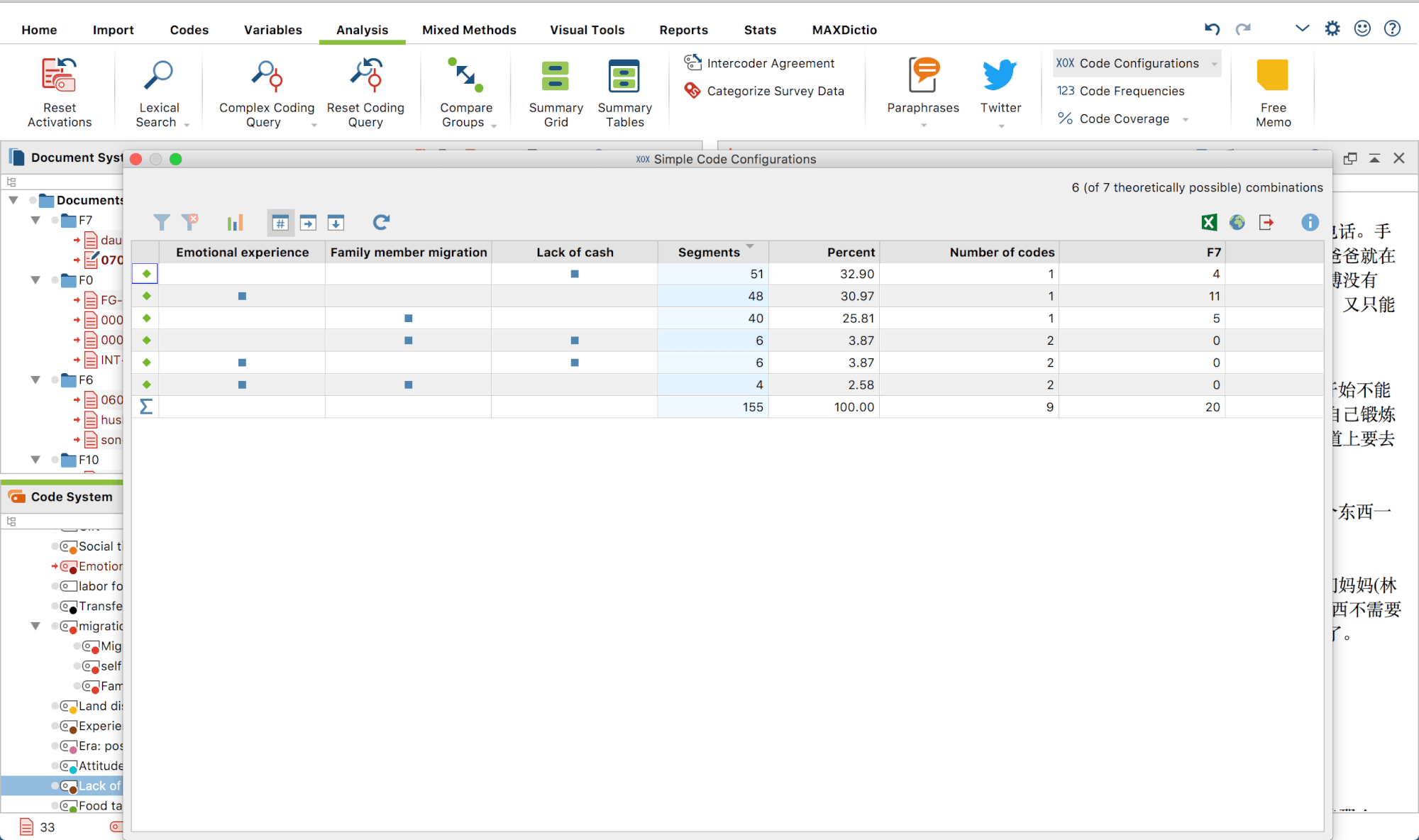
Note that the row "Replace with." not populated. To automate this action, you can use excel's Find and Replace service.

#Add code to dictionary maxqda verification#
"Whole Word", "Case sensitivity", "Starting letters", "Category activated" and "Search item activated" can be used to enable and disable the available search options using the dictionary we created, where "1" means "yes" and "0" means "no".Ī correctly working dictionary requires verification of records in the table, but within the standard format adopted for MAXDictio. The Keyword column is missing items to search for text segments that belong to the appropriate dictionary category. By clicking the special icon to insert codes from the "Code List" window, having previously agreed to insert only activated codes.

In the window that opens, create a new dictionary and rename it to "Keywords"Ĥ. In the MAXDictio tab, left-click on the "Dictionary" iconģ.

In the "Code List" window, activate the "Keywords" code with subcodesĢ. This task can be solved in several stages.Īt the first stage, you need to perform the following sequence of actions:ġ.
#Add code to dictionary maxqda pdf#
Screening quantitative and qualitative analysis of the contents of many PDF files in the group of documents "Bibliographic data - applications" at the same time, as well as visualizing the results of this process, requires the creation of a dictionary based on the author's keywords. Unfortunately, MaxQDA does not (or I did not find it) its own tool for auto-encoding segments of text with keywords that were suggested by the authors of the publication.Ĩ. It is impossible to assess the proximity, content and intersection of codes in articles and their bibliographic data. This is the reason why quantitative and qualitative analysis is possible only on the basis of the frequencies of occurrence of code in a sample of documents. I would like to draw your attention to the fact that the document browser (see the additional window in the green box) shows that the author's keywords are associated only with the file, while there is not a single automatically encoded segment in its structure. If this is not the case, then a more detailed description of the capabilities of the bibliographic manager of Elsevier you'll find it here. It is not the purpose of this article to explain how mendeley works because we are sure that you have extensive experience with this bibliographic information management program. Create a separate folder in Mendeley, let's call it "Plantar fasciitis". This is due to the careful filling of the metadata of articles and the universality of methods for extracting bibliographic information from them.ġ.

This method will be especially useful for those who are at least superficially familiar with the topic under study, but at the moment are not going to delve into the problem deeper than necessary for At the same time, you should understand that a higher speed of analysis will inevitably lead to some loss of quality).įor screening analysis, it is better to choose English-language articles from well-known information platforms, for example, Science Direct, and for automatic processing and classification of the data obtained, use the Mendeley bibliographic manager. I want to accomplish this assignment by auto-coding a lot of text documents with the keywords of the authors of the articles. Imagine that your supervisor gave the task very quickly to write a review of modern methods of treatment and diagnosis of plantar (plantar) fasciitis.


 0 kommentar(er)
0 kommentar(er)
